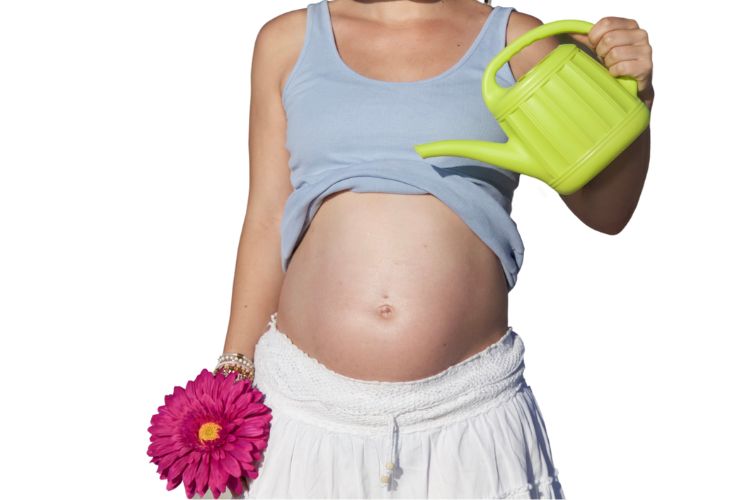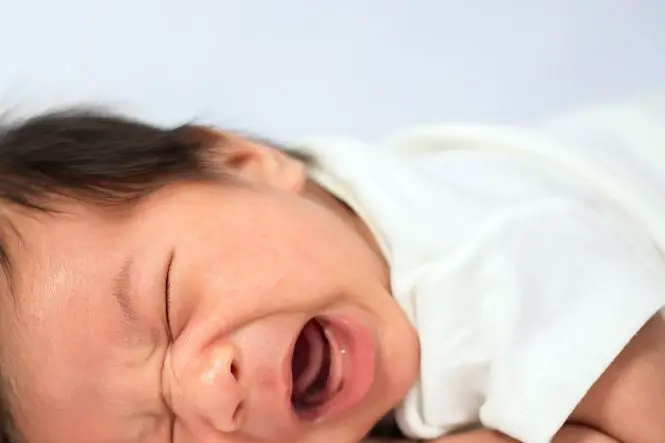Read this article to learn if it’s okay to blow on your baby’s face, if it’s unhygienic, and what effect blowing on a baby’s face has.
Blowing in a baby’s face is a common tactic to stop a baby from crying. It activates the Diving reflex, which makes them hold their breath for a brief moment, thus halting any crying or fussing. It’s an entirely safe way to stop crying when you run out of options.
While hearing that blowing on a baby’s face stops their breathing might seem alarming at first glance, it’s a brief moment that all of us have when we feel water on our face, so we don’t breathe in. Since it’s an entirely natural reaction, there is nothing dangerous about using the Diving reflex to calm a crying baby.
Some parents may be considered less with the Diving reflex and more worried about the potential health risks of blowing air on a baby’s face. Illnesses can travel from the parent to the infant through particles in their breath. While this is a risk, unless you are already distancing yourself and covering your month, your baby is likely already coming in contact with any germs you have.
Table of Contents
What is the Diving Reflex?
The Diving reflex or diving response is something all air-breathing creatures have that instinctively makes them hold their breath when in water. When a baby feels something on their face, around the mouth and nose area, that could impede their breathing, they hold their breath.
The diving reflex is an automatic reaction from the baby’s nervous system that helps to block airways when sensing something in the nostrils. It’s the same reflex that activates when you wash your baby’s face or bathe them. Blowing on their face triggers this reflex, so the baby holds their breath.
The diving reflex is a natural process and won’t cause your baby to hold their breath for an extended period. They will hold their breath for perhaps a second and then return to their regular breathing pattern. However, it is long enough to stop any crying and can help calm them down.
Is Blowing on Your Baby’s Face Unhygienic?
Like the cold and flu, many illnesses transfer from one person to another through particles in the breath. Some parents may worry that blowing on their baby’s face could be unhygienic. However, if you are already sick enough to transfer it through the breath, you should be distancing yourself from your infant regardless.
Any particles that might have bacteria will travel from your mouth and nose simply from breathing normally, let allow while breathing directly onto your baby’s face. In most cases, exposure to different bacteria can help build an infant’s immune system. However, some illnesses carry through the breath.
There is nothing more unhygienic about blowing on your baby’s face than breathing around your baby or laughing and talking to them. If you think that you have an illness like a cold that could infect your baby, you shouldn’t be in close contact with them, to begin with. Distancing yourself and washing surfaces you come in contact with better protect your infant from infection.
Can You Blow Too Hard on Baby’s Face?
It is unlikely that you will do any harm by blowing on a baby’s face, given the human body’s capacity to blow air. While this doesn’t mean that you can start being aggressive when blowing air on their face to help calm them, it does mean that there is no physical harm you can cause a baby simply through your breath.
Blowing gently is always the way to go since it should be enough to trigger the Diving reflex without causing stress in the baby. If you want something more specific, think about blowing towards a candle but not blowing hard enough to make the flame go out. You want a slightly prolonged breath and not something sharp and quick.
A few puffs and your baby should forget what they were crying about and move on to something new that interests them. Remember that this is a tactic for when your baby is crying, but there doesn’t seem to be a reason. If your baby is literately crying about something such as being hungry or uncomfortable, the blowing on their face will not help.
Tips for Calming Your Baby
Blowing on your baby’s face is only one of many tactics you can try when you don’t know why your baby is crying or fussing. Using tactics like massages and cuddling can comfort your baby and help keep them calm. There are even some behaviors that you might do that are causing your baby to get upset.
Some things to try when your baby doesn’t stop crying:
- The rooting reflex: The Rooting reflex is a natural reflex a newborn has that makes them turn their head to the side when you stroke their cheek, which can stop their crying. However, this is usually because they expect a feeding session, so ensure a bottle is ready.
- Use warm wipes: If your baby is crying while wiping their face or changing them, it might be because you are using cold wipes. Using a warm wipe instead could make the process of washing their face more enjoyable for both of you.
- Stick to quiet areas: Babies generally don’t like unfamiliar surroundings and faces, so if you are taking them somewhere new, try to find a quiet and secluded place to avoid a crying spree.
- Cuddling: Sometimes, your baby wants your attention and will cry until you give it to them. Cuddling with your baby while maintaining eye contact and talking to them could be enough to calm them down.
- Massage: Massages relax pretty much everyone, babies included. Learning how to correctly give your baby a massage could be a lifesaver when you can’t figure out how to calm them down.
Conclusion
There is nothing wrong with blowing air on a baby’s face to help calm them, and it’s an effective way to get a fussing baby to stop crying by using their Diving reflex. However, there is some caution to using it while feeling ill as it can increase the chances of your baby getting sick as well, though it isn’t by much.





